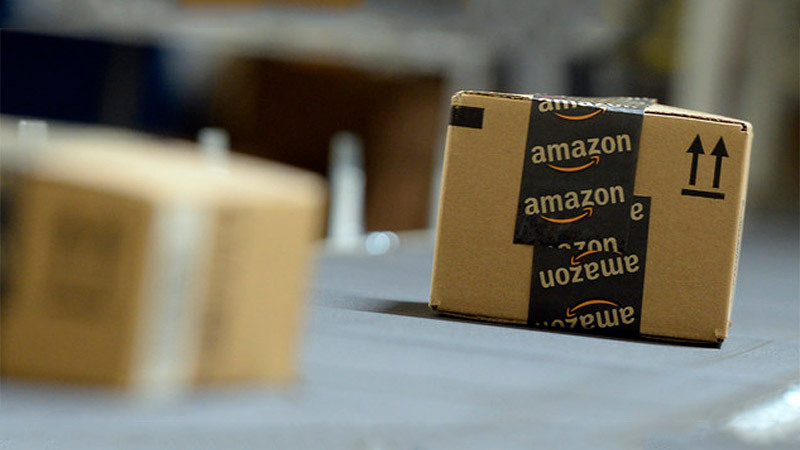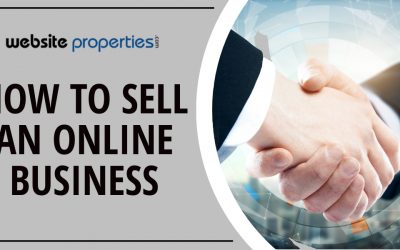A Short Guide to Understanding Amazon
These days almost every ecommerce business derives some portion of its revenues from an Amazon.com sales channel. In fact, over the past 5 years it has become very common for clients to approach our website brokerage firm wishing to sell their online business that operates exclusively on the Amazon platform. Understanding a little bit about Amazon and the various features it provides to help sellers reach customers online is important for buyers new to ecommerce so they may properly access these types of properties. If you are considering buying an online business for sale, and it has an Amazon component, read on to gain a basic understanding of this powerful, diverse ecommerce platform.
Amazon is a giant marketplace. Understanding it and getting started with selling online can be intimidating for anyone. However, optimizing your sales means mastering the right channels, and few businesses can discount the reach and ubiquity of Amazon. In 2017, the juggernaut was responsible for 44% of all online sales! It creates a tremendous opportunity for sellers of every kind. That’s the good news. The not so good news is that Amazon is also a bit complicated and can be very competitive. Sellers just starting out will be faced with a myriad of options that may or may not be right for them.
Getting Started
At its all-time high, Amazon sold more than 300 items a second. With some sellers making millions and others just looking to make a few extra bucks, Amazon needs a way to organize and prioritize their sellers to maximize their own profits. Sellers will have a wide variety of options to choose from when it comes to how they sell, but all of those extra choices can lead to some rather messy mistakes. Amazon has made a lot of adjustments when it comes to seller incentives, which impacts sellers in a variety of key ways. Understanding these details before you start selling is ultimately your best bet if you’re hoping to set yourself up for success.
Seller Central
Seller Central is open to everybody, and it doesn’t require a seller to own the brand name of the product they are selling. It’s applicable for sellers who sell just a few units of their product per week, but can scale to selling thousands of items per month. Amazon is essentially acting as the advertising medium, but you are selling your product directly to the customer. Sellers can set your own list price and enjoy higher margins on each individual sale than they would if they chose to wholesale. In addition, sellers get paid quickly (between 1 – 2 weeks after the sale).
Seller Central can bevery competitive. Selling third party products (brands you do not control) can be a challenge and will require careful attention to product pricing and margins to ensure your business remains profitable. You may be up against more established sellers who have already cornered your particular niche and earned the Buy Box.
The Buy Box is the starting point where customers select the vendor for their purchase. When a customer is shopping on Amazon, the system will analyze each request by looking for products appropriate to the customer’s search criteria. It then displays them in both the order that best matches the search criteria and prioritizes vendors based on who is most likely to complete a sale.The formula for the search results order and the Buy Box is complex and proprietary to Amazon but items such as the seller’s product velocity (number of items they sell), customer rating and return rate can all effect the results. Additionally, Seller Central members may even be competing against not only each other, but against Amazon itself if it is selling a product eligible for the Buy Box. In short, Amazon’s algorithm for the Buy Box varies and is based on the individual seller, with higher performing sellers getting top billing. It can take time, hard work and marketing dollars to gain this coveted spot.
Fulfillment by Amazon
When it comes to fulfilling a purchased item on Seller Central, sellers have two options. They can choose direct fulfillment, where Amazon completes the sale and passes the fulfillment data to the seller. Or sellers can choose Fulfillment by Amazon (FBA) instead, where Amazon will handle the items and shipping costs. Amazon has more than 50 warehouses in the US alone, and just one warehouse can cover about 23 acres of land. FBA is the best way for sellers to leverage their power to your advantage. Amazon will also take care of any customer service issues or returns, which can be a tremendous time saver for a busy third-party seller.
FBA is also key to reaching the roughly 90 million Amazon Prime Members. In order to achieve the Buy Box status, the seller has to guarantee two-day shipment which may only be possible with FBA. It should be noted that Amazon does charge you for both storing and shipping the item. If your items sit too long in their warehouse without being sold, you may be charged a fee. (What you pay is determined by both the physical size of and your personal rate of sales.)
Vendor Central
Vendor Central is an invitation-only program that allows vendors to make Amazon their wholesale partner. These invitations go out to large brands that sell massive quantities of product (usually from their own factories.) While profit margins are lower and the payments take longer than Seller Central, vendors also have the opportunity to increase their bulk sales.
The process is fairly straight-forward:
• Vendor negotiates flat price for items with an account manager
• The account manager places the order
• Vendors ship items to Amazon warehouses
• Amazon takes care of fulfillment, shipping, returns, and customer service
Amazon now owns the vendor’s products in this case, which means the vendor’s items will very likely enjoy better positioning for their Buy Box. (Amazon favors their items during a customer search.) Customers also typically prefer to buy from a trusted source like Amazon rather than a third-party seller. Finally, Vendor Central clients have access to marketing services that can further help them promote their products.
Vendor Express
Vendor Express is a basically Vendor Central on a smaller scale. There’s no invitation required, but you are required to hold the IP (Brand) for the products you sell. This platform is designed for new brands or those that sell specialty goods, so Amazon has a chance to ‘invest’ in start-ups. There’s no charge to join Vendor Express, and you enjoy many of the same benefits that those in Vendor Central enjoy (e.g., premium exposure, Amazon-backed fulfillment, etc.) Amazon even waives certain shipping and handling charges for those enrolled in their Vendor Express program. However, Vendor Express sellers don’t get to interact with their customers, nor do they get to set their own prices. These two negatives may hinder their individual reach and profit margins.
There’s an art to selling on Amazon, but it can be learned if you understand the underlying principles behind the company. This guide really only scratches the surface when it comes to the many factors that can affect your bottom line. However, the more research you do, the more likely you are to make the right moves. If you’re starting a new venture or selling your online business, contact our firm to see how working with a website broker can help you optimize your internet business for sale.


